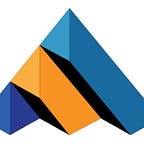Forex Charts Explained
Traders that use charts are often referred to as “Technical Traders” and these charts serve as a guide on whether a financial instrument is trending up, down or sideways and is based on using historical data. Market participants from novices to experts use chart patterns, studies, oscillators and line drawing functionality to create predictions & analysis so that Forex traders can act upon their trading strategy and execute buy or sell orders with their broker.
Once Forex traders understand the basics of charting and “Technical Analysis”, it is easier (although still very difficult) to understand why markets move in certain patterns and cycles. Using different timeframes, Traders can assess short-term price action alongside longer-term market direction using a plethora of different types of charts. These include Candlestick charts, Bar charts, Trend Bar charts, Line charts, Heiken-Ashi charts plus Market Profile and Point and Figure charts with the Candlesticks method being the most popular.
This tried and tested Candlestick method of analysing the financial markets have been used since the 18th Century by Sokyu Homma, a Japanese rice trader and is still used today to predict particular market movements. This geographical representation of price movement can be used over different timeframes and gives prices for the Open, High, Low and Close of a particular time period (for example Daily, Weekly, 4 hour, 30 minutes etc). Candlesticks patterns that are created have different meanings, more information and how to use them correctly are found under this link https://tradermade.com/japanese-candlesticks-patterns. You can also use Candlestick charts from the TraderMade Forex Portal, just click this link https://research.tradermade.com/forex-charts?symbol=EURUSD for a free no-obligation 30-day trial.
When looking for a Charting provider, Traders should first understand the quality and sources of the data that they want to analyse. As Forex data is ‘Over the Counter’ (OTC) then understanding how reliable and trusted this data is, will be imperative to the Traders success or failure. As an example, the TraderMade feed is an aggregation of multiple feeds which are blended into our unique, trusted and reliable offering — and used by Institutional and Proprietary Traders from all over the globe.
To create buy or sell signals for the Trader to act upon, Technical Traders use predominately two types of indicators;
* Studies or Overlays — these Technical indicators are plotted onto the Forex chart and give an instant visual representation of the particular study. Examples include Moving Averages, Fibonacci Lines, Keltner Channels and Bollinger Bands.
* Oscillators — unlike the above Studies/Overlays, the Oscillators are plotted above or below the chart. Examples include MACD, Relative Strength Index (RSI) and Stochastics.
Forex traders often use many different Technical indicators, and this process of choosing which best suits their trading style can sometimes take a lot of trial and error back-testing. These indicators are then used with other techniques for trade ideas to be created.
Here is an example of a GBPUSD Daily Candlestick chart using 2 weeks work of historical data, with a Bollinger Band (Period 20 & Standard Deviation 2) plus a MACD (26 period) using the TraderMade Forex Portal;
The Bollinger Band uses a Moving Average and a positive and negative pair of trend lines which are plotted 2 standard deviations away from this Moving Average. As the prices are closer to the upper band, the market is presumed to be overbought, and the prices closer to the lower band, the more oversold the market is. The MACD assists Forex traders for trend direction and momentum of that particular trend. When the MACD indicator is above 0 then the price is supposed to be in an upward bullish stage, whereas when the price is below 0, prices have entered a bearish phase. The ‘Signal’ line accompanies the MACD line, when the MACD line crosses the Signal line this indicates prices are falling, when the MACD line crosses above the Signal line, the price is therefore presumed to be rising.
As you can see, there is a lot of information to consume for each Study/Overlay and Oscillator, therefore picking the correct Technical indicator at the correct time is essential for a Forex trader to maximise market opportunities and ultimately become successful. Also looking at different chart patterns e.g. Continuation patterns like Flags, Pennants, Triangles and Wedges look for temporary interruptions of an existing trend and are also found on the TraderMade Forex Portal using this link https://research.tradermade.com/price-patterns. Other patterns include Reversal patterns and include Head and Shoulders, Double Tops and Double Bottoms and Gap Fills.
With over 100 Technical indicators, huge range of line drawing functionality using our world-renowned quality and trusted real-time and historical data, we want all market participants to excel. Our charting is also user-persistent as well, meaning that any work or changes that are made by our customers are automatically saved and there when our Traders log back in again. Being fully functional on mobiles, tablets and desktops means that even when you are not in the office, you can still be kept fully upto date with all market moves at the click of a button.
With a huge instrument list of Forex, Equity Indices, Commodities, Precious Metals and Cryptocurrencies ready to use immediately, click on this link https://research.tradermade.com/signup and register for a free no-obligation trial of the TraderMade Forex Portal for 30 days, and takes no more than a minute to register and login.
Any questions, visit https://tradermade.com and live chat with one of the team, or email sales@tradermade.com for more information.
